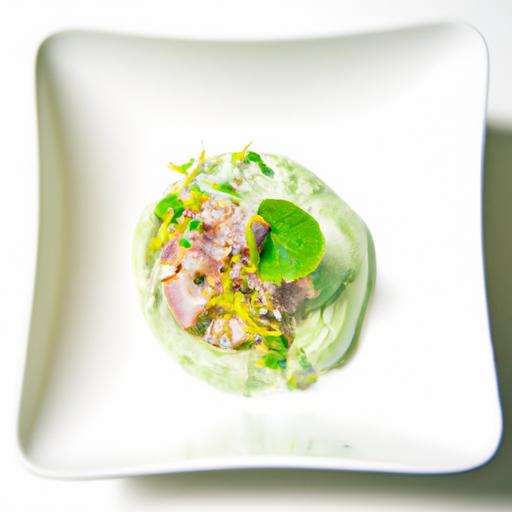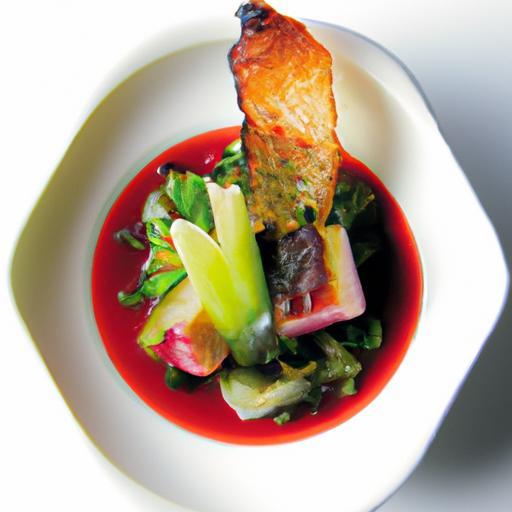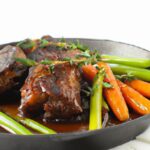In the vibrant tapestry of global cuisine, one taste has quietly woven its way from ancient traditions to modern plates, captivating palates with a profound depth that transcends sweet, sour, salty, and bitter. Umami – often described as the elusive “fifth taste” – is a savory symphony rooted in the presence of glutamates, those remarkable molecules that unlock a world of flavor complexity. From the fermented soy sauces and miso pastes of East Asia to the aged cheeses and sun-dried tomatoes of the Mediterranean, umami-rich ingredients have shaped culinary identities across continents. This article embarks on a flavorful journey to unveil how diverse cultures harness glutamate’s magical flair, turning simple dishes into unforgettable gastronomic experiences. Join us as we explore the origins, science, and savory secrets behind umami’s global embrace, discovering why this taste sensation continues to inspire chefs and food lovers alike.
Crafting Umami-Infused Dishes for Contemporary Kitchens
Umami Unveiled: Global Cultures and Glutamate-Rich Flair invites you on a culinary journey to create a vibrant umami-rich mushroom and miso glaze salmon dish that harmonizes traditional glutamate treasures with modern cooking flair. This dish draws inspiration from East Asian kitchens where fermented miso and shiitake mushrooms enhance savory depth-perfect for home chefs craving a balanced boldness in weeknight dinners or special occasions alike.
Prep and Cook Time
Prep: 15 minutes | Cook: 20 minutes | Total: 35 minutes
Yield
Serves 4
Difficulty Level
Medium
Ingredients
- 4 skin-on salmon fillets (6 oz each), fresh and preferably wild-caught
- 1 cup dried shiitake mushrooms, rehydrated and finely chopped
- 3 tbsp white miso paste (fermented for umami depth)
- 2 tbsp soy sauce, low sodium
- 2 tbsp mirin (Japanese sweet rice wine)
- 1 tbsp toasted sesame oil
- 1 tbsp freshly grated ginger
- 2 cloves garlic, minced
- 1 tbsp honey or maple syrup for gentle sweetness
- 1 tsp freshly ground black pepper
- 2 scallions, thinly sliced for garnish
- Sesame seeds (white or black) for garnish
- Fresh cilantro leaves for finish (optional)
Instructions
- Prepare mushroom glaze: In a small saucepan over medium heat, combine rehydrated shiitake mushrooms, miso paste, soy sauce, mirin, sesame oil, ginger, garlic, and honey. Stir continuously until miso dissolves and the mixture thickens slightly, about 7-8 minutes. Remove from heat and set aside.
- Preheat your oven: Set to 400°F (200°C) and line a baking sheet with parchment or lightly oil it to prevent sticking.
- Sear the salmon: Heat a large oven-safe skillet over medium-high heat. Place salmon fillets skin-side down and sear for 3-4 minutes until the skin is crisp and golden brown. Flip carefully and cook for 1-2 minutes on the other side.
- Apply umami glaze: Spoon generous amounts of the mushroom miso glaze over the top of each salmon fillet, allowing it to coat the surface.
- Oven roast: Transfer skillet to the preheated oven and bake for 8-10 minutes until salmon is cooked through but still moist and flaky. The glaze will caramelize lightly, enhancing savory layers.
- Plate and garnish: Serve each fillet with a sprinkle of scallions, toasted sesame seeds, and fresh cilantro. A wedge of lemon on the side complements the umami depth with bright citrus notes.
Tips for Success
- For maximum umami richness, choose dried shiitake mushrooms over fresh; their glutamate levels are higher after drying and rehydration.
- If you prefer milder heat, substitute ginger with a pinch of smoked paprika for a different savory aroma.
- Make the mushroom miso glaze a day ahead to deepen flavors-the umami melds beautifully with time.
- Use a fish spatula to turn the salmon, preserving the crispy skin and delicate flesh.
- For gluten-free adaptation, swap soy sauce with tamari.
Serving Suggestions
Pair this umami-imbued salmon with steamed jasmine rice or a light soba noodle salad tossed in sesame dressing to balance rich flavors. Fresh cucumber ribbons or sautéed baby bok choy brushed with soy garlic add crunch and freshness. Drizzle any leftover mushroom miso glaze sparingly over side vegetables or drizzle on steamed greens to extend the glutamate charm.

| Nutrition | Per Serving |
|---|---|
| Calories | 370 kcal |
| Protein | 33 g |
| Carbohydrates | 8 g |
| Fat | 20 g |
Discover more about incorporating glutamate-rich ingredients in your culinary repertoire by visiting our Fermented Foods and Umami Guide. For a deeper dive into glutamate chemistry and health benefits, explore insights on NCBI’s research portal.
Q&A
Q&A: Umami Unveiled – Global Cultures and Glutamate-Rich Flair
Q1: What exactly is umami, and why is it often called the “fifth taste”?
A1: Umami, a Japanese term meaning “pleasant savory taste,” is recognized as the fifth basic taste alongside sweet, sour, salty, and bitter. It’s the deep, mouthwatering flavor that lingers, often described as meaty or brothy. This unique taste primarily comes from glutamate, a naturally occurring amino acid, which acts like a flavor enhancer, giving dishes that irresistible, rounded savoriness.
Q2: Where does umami come from in our food?
A2: Umami is found naturally in many protein-rich foods. Think aged cheeses, ripe tomatoes, seaweed, mushrooms, soy sauce, and cured meats. Also, cooking methods like slow simmering and fermentation amplify glutamate levels, unlocking layers of flavor. For example, the Japanse dashi broth, made from kombu seaweed, is a classic umami powerhouse.
Q3: How have different cultures embraced umami in their cuisines?
A3: Umami is a global sensation, woven into diverse culinary traditions. Japanese chefs cherish ingredients like miso and bonito flakes; Italians craft umami-rich ragù and Parmigiano-Reggiano cheese; Koreans ferment kimchi and savor doenjang; Chinese cooking relies on soy sauce and dried shiitake mushrooms. Each culture uses glutamate-rich ingredients to elevate everyday meals into rich, unforgettable feasts.
Q4: Can understanding umami improve home cooking?
A4: Absolutely! Knowing how to balance umami can turn a bland dish into a dance of flavors. Adding a splash of soy sauce, a sprinkle of Parmesan, or a handful of sun-dried tomatoes can transform simple recipes. Plus, combining multiple umami sources creates a depth that feels complex but is surprisingly easy to achieve at home.
Q5: Is umami just about taste, or does it impact health as well?
A5: Umami doesn’t just delight the palate; it may also promote appetite satisfaction and reduce the need for excess salt or fat, contributing to healthier eating habits. However, moderation is key, especially with processed foods high in monosodium glutamate (MSG). Embracing natural umami sources can enrich flavor while keeping meals wholesome.
Q6: What does the future hold for umami appreciation worldwide?
A6: As global palates become more adventurous, umami’s star continues to rise. Chefs and food innovators are exploring new glutamate-rich ingredients, from sea vegetables to insect protein, while blending traditional and modern techniques. Umami is not just a taste-it’s a universal language of flavor, connecting cultures through savory delight.
Umami unveils a savory secret shared across continents, inviting food lovers everywhere to savor life’s delicious depths with every bite.
The Conclusion
As our culinary journey through the vibrant landscapes of umami concludes, it becomes clear that this savory sensation is far more than a simple taste-it is a universal language spoken by cultures around the globe. From the fermented soy sauces of East Asia to the aged cheeses of Europe, glutamate-rich ingredients are the flavorful threads that weave together diverse traditions into a shared tapestry of deliciousness. Understanding umami not only deepens our appreciation for food but also connects us to the rich histories and creative spirits behind every bite. So next time you savor that unexpected burst of savoriness, remember: it’s not just flavor-it’s the global heart of cuisine, unveiled in every glutamate-rich flair.


